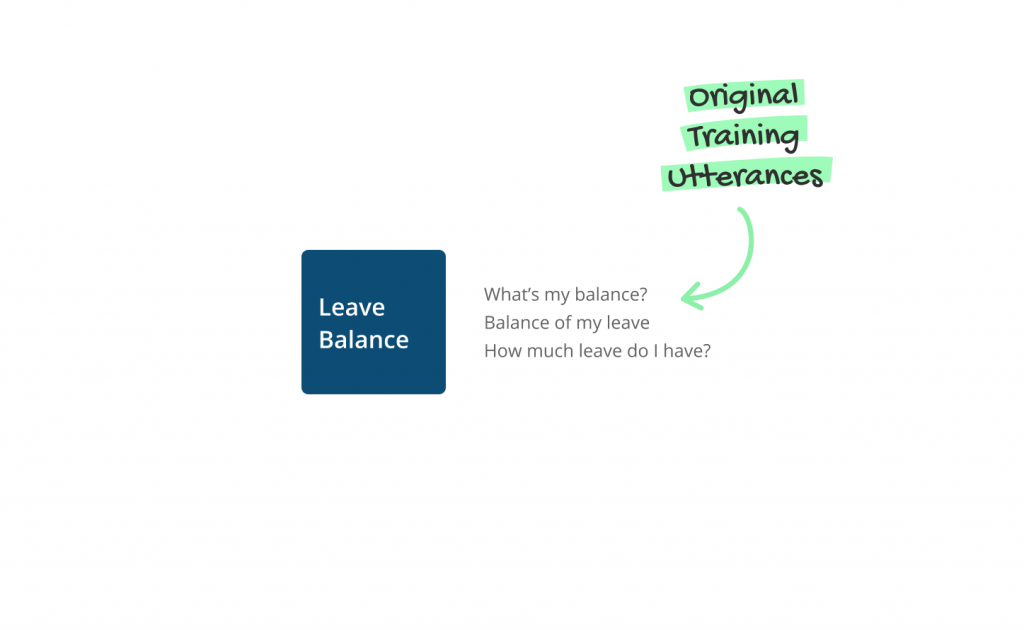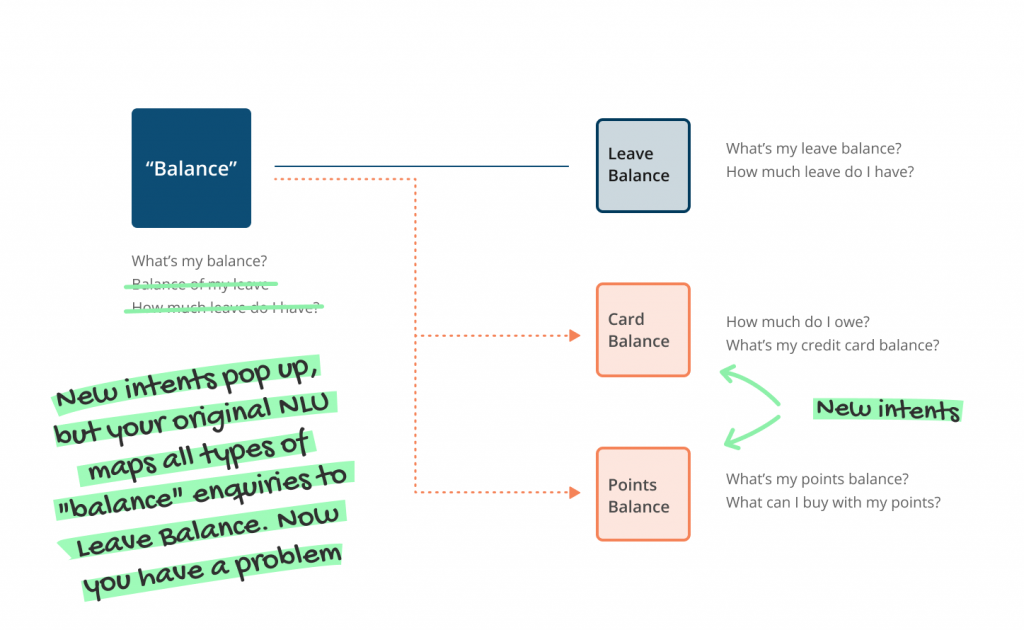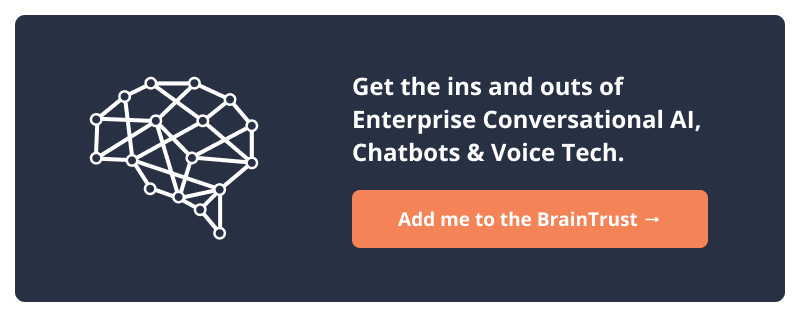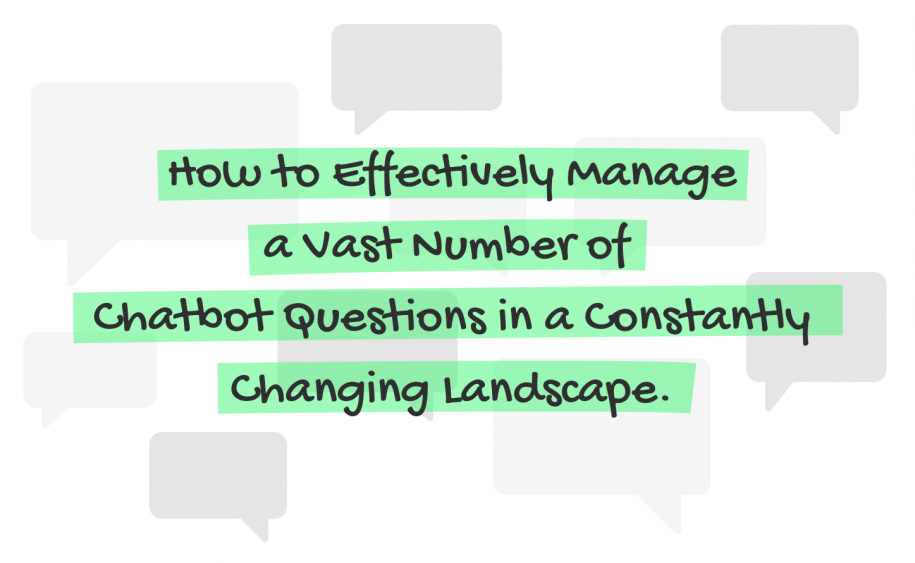Do you feel like you’re drowning when you’re just trying to stay afloat with managing the growing number of questions your Chatbot can answer?
The landscape in which you launched your Chatbot is constantly changing.
You’re on a mission to deliver enhancements to the Chatbot based on your original vision and roadmap.
There are new or changing products constantly released from your company.
And there’s a need to be responsive to crisis events (like COVID-19).
You want your Chatbot to be helpful; to deliver on its promise of a better customer experience. But your team spends too much time managing the vast number of questions and answers in the Chatbot. And it’s getting harder as it grows.
Related: 6 Steps for a Winning Voice or Chatbot Channel Strategy
Don’t focus on chatbot questions, focus on the NLU.
To be useful and help complete a Job To Be Done (JTBD) a Chatbot needs to interpret what has been spoken/written, then provide information valuable back to the user.
In this article we’re deep diving on the brains: Natural Language Understanding (NLU).
This is usually in the form of extracting an “intent” (eg, “what’s my balance?”, or “how do i close my account?”) and parameters (or “slots”, such as AccountType:savings, Account#:123456).
The quality of your Chatbot experience hinges on the quality of your NLU. We typically expect > 95% recognition on what users say/write. Don’t be fooled by claims that 60%, 70%, 80% accuracy on your text analysis NLU is “OK”. It’s not, and it means your users have a poor experience.
The general process for maintaining your Chatbots NLU is the same whatever your stage of implementation; Whether that’s testing an initial pre-launch, in the early days of just launching, or well down the path of maintaining your Chatbot, you should be assessing how users interact with your Chatbot on a regular basis.
Related: How to select the right NLP tool for your customer experience needs
The most laborious part of managing a vast number of Chatbot Intents is the triage of which user utterances were recognised correctly, and which weren’t. The reading of a user’s utterance. Deciding which Intent it *should* map to, or deciding whether a new Intent should be created. You’ve probably experienced reading the same utterance 3-5 times throughout the process. Then you’ve got to go update all the training data and cross your fingers in hoping it works.
The real challenge with managing a vast number of questions comes not from adding NEW question/answer sets. The real challenge lies in Deciding whether to break a previously broad topic into a number of specific questions/answers is, and ensuring there’s no overlap to avoid Intent Clashes.
For example, your HR chatbot started with “balance” linked to leave balance.

Now you find people asking for their “corporate card balances”.

Training utterances for “leave balance” and “credit card balance” need to be split out. Where your NLU only extracts “balance”, you need to decide how to provide users with the best experience.
Need help finding the best NLP for your use case? Try this quiz →
Just how big of a problem is poor management of your Chatbot’s NLU?
1. Frustrating grind
Your team ends up in a mix of ground hog day and playing a game of whack-a-mole (really “whack-an-NLU-error”) in trying to increase NLU coverage across a vast number of Intents whilst not breaking existing Intents.
Your team members become frustrated, then disinterested. There’s low engagement and they no longer believe in the vision. They eventually leave the project leaving a massive IP gap for the next person to fill.
2. Unable to focus on producing value with new features or enhancements.
When your team spends too much time playing whack-a-mole, copying and pasting training utterances between Intents, your team can’t focus on delivery of new features or enhancements to your Chatbot. You’ll be left with very little resources to make real enhancements, or your budget is going to increase alongside a weaker ROI.
Read: Resolve frustrating Intent Clashes in Chatbot & Voice Projects
3. Poor Perception by Stakeholders and Customers
Customers and Stakeholders don’t see all the effort behind the management of your Chatbot’s NLU behind the scenes. All they see is a stagnant product/service.
For Customers, this can lead to them not getting answers to new questions not covered and giving up on interacting with your Chatbot. Can you think of a time where this has happened to you as a customer?
For Stakeholders, low confidence in the business value might lead to the loss of sponsorship and funding. How can you justify further funding to enhance your Chatbot offering when you’re perceived to be standing still?
3 Solutions to fix Chatbot question overload.
So, here’s 3 options to effectively managing the vast number of Chatbot questions in a changing landscape:
- Free option: Process and Change Adoption. 1. Leverage a strong Business Analyst to identify the least effort path to the maintenance of your Chatbot’s NLU. This should cover data capture, cleansing, triage, delegation and resolution. 2. Engage a Change Manager to work with the best person suited to adopt continual improvement ownership of your Chatbot’s NLU.
- Specialised tools: Incorporate best-in-class tools into your process and technology stack. Extract conversational data, Identify clashes or the need for new Intents, update your Intent/NLU training data. One such platform worth checking out is Intent Manager by Pure Speech Technology.
- All inclusive platform: If you’ve got a reasonably sized organisation and Chatbot, it might be worth investing in platforms which have NLU performance grading and content management baked in. One such platform which does this well is V-Person by Creative Virtual.
Find out more information about the Intent Manager product and service here.
Think this article would be useful to someone in your network? Share this and help someone get the breathing room to focus on creating greater customer value with their Chatbot offering.
Have questions? Feel free to send us a message, or get a free Conversational AI consultation to discuss your project!

